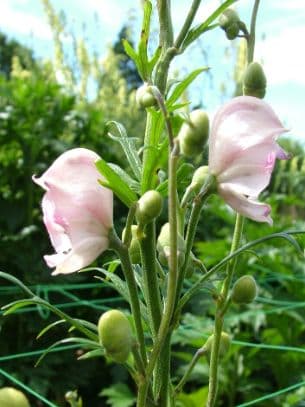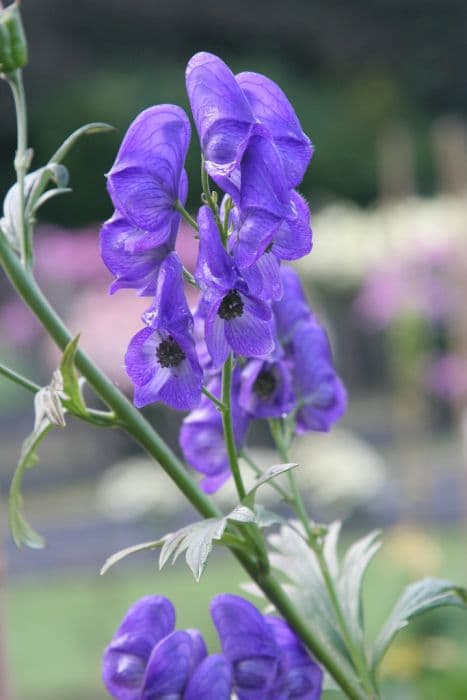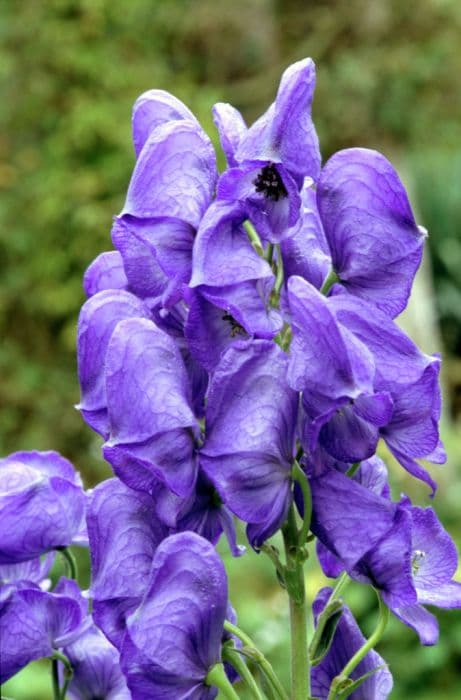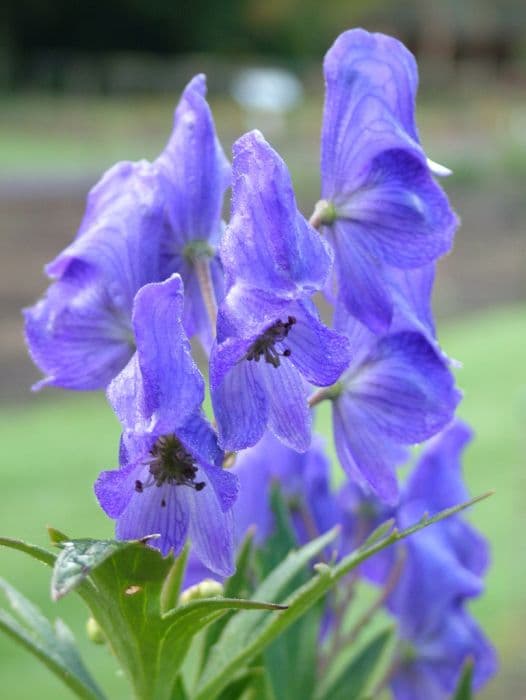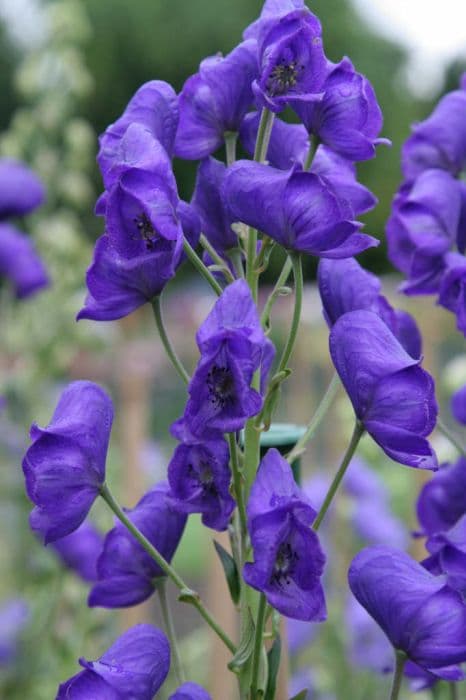Larkspur Delphinium 'Oliver'

ABOUT
Delphinium 'Oliver' is a stunning plant known for its vibrant and showy flowers. The plant typically boasts tall spires of densely packed florets that come in a striking shade of blue. Each individual flower on the spire is intricate, with a classic dolphin-like shape that is characteristic of the Delphinium family. The blooms may also have a contrasting white or light-colored bee, or central part, that adds to their dramatic appearance. The foliage of Delphinium 'Oliver' is attractive as well, consisting of deeply lobed, glossy green leaves that provide an elegant backdrop to the floral display. The leaves are arranged on the stem in a way that creates a lush, full appearance for the plant. Overall, Delphinium 'Oliver' impresses with its regal display of flowers that emerge against the greenery, creating a striking and elegant presentation that is favored in garden designs and as cut flowers for arrangements.
About this plant
 Names
NamesFamily
Ranunculaceae
Synonyms
Oliver's Larkspur, Oliver's Delphinium
Common names
Delphinium 'Oliver'.
 Toxicity
ToxicityTo humans
Larkspur, including the cultivar known as Delphinium 'Oliver', is poisonous to humans if ingested. All parts of the plant, especially the seeds and young leaves, contain toxic alkaloids such as delphinine, ajacine, and others. These substances can cause serious symptoms including muscular weakness, nausea, vomiting, and diarrhea. In severe cases, ingestion can lead to respiratory paralysis, heart failure, and death.
To pets
Larkspur is also toxic to pets. If your pet consumes any part of a Larkspur plant, they might exhibit symptoms such as drooling, abdominal pain, muscle tremors, stiffness, convulsions, and paralysis. Severe poisoning can result in cardiac failure and, if not treated immediately, can be fatal. It is crucial to keep pets away from Larkspur plants and seek veterinary care promptly if ingestion is suspected.
 Characteristics
CharacteristicsLife cycle
Perennials
Foliage type
Deciduous
Color of leaves
Green
Flower color
Blue
Height
4-6 feet (1.2-1.8 meters)
Spread
1-2 feet (0.3-0.6 meters)
Plant type
Herb
Hardiness zones
3-7
Native area
Europe
Benefits
 General Benefits
General Benefits- Aesthetic Appeal: Delphinium 'Oliver' offers tall spikes of vibrant blue flowers that can add dramatic height and color to garden borders or flower beds.
- Attracts Wildlife: The blooms are attractive to pollinators such as bees, butterflies, and hummingbirds, supporting local ecosystems.
- Cottage Garden Style: This plant is ideal for creating or enhancing a traditional cottage garden look due to its quintessential charm and structure.
- Seasonal Interest: Delphiniums typically flower in early summer and can be encouraged to produce a second flush of blooms in late summer or early fall if cut back after the first flowering.
- Plant Combinations: It pairs well with other perennial plants and can be used effectively in mixed borders or as a backdrop to shorter plants.
- Vertical Interest: Due to its tall growth habit, Delphinium 'Oliver' provides vertical interest, drawing the eye upwards and creating depth in garden design.
 Medical Properties
Medical PropertiesThis plant is not used for medical purposes.
 Air-purifying Qualities
Air-purifying QualitiesThis plant is not specifically known for air purifying qualities.
 Other Uses
Other Uses- Delphinium Oliver can be used in flower arranging, providing a touch of vibrant blue to bouquets and floral displays due to its tall spikes and bright blossoms.
- The plant serves as a natural pest deterrent in gardens, as some pests avoid the area due to the plant's toxicity if they ingest it.
- Gardeners may employ Delphinium Oliver in companion planting to attract pollinators such as bees, butterflies, and hummingbirds, which can benefit the pollination of nearby plants.
- The dried stalks of Delphinium Oliver can be used in crafts, such as making wreaths or as support stakes for other plants in the garden.
- The flowers can be pressed and used in decorative art pieces, such as in bookmarks or framed botanical pressings, for their aesthetic appeal.
- Dye can be extracted from the flowers of Delphinium Oliver, providing a natural source of blue dye for textiles or art projects.
- In educational gardens, Delphinium Oliver can be used to teach students about plant growth patterns, structural characteristics, and the importance of plant biodiversity.
- The plant might be incorporated into a sensory garden, as it can provide a visual stimulus with its distinctive height and color, though care should be taken due to its toxicity.
- Garden designers often use Delphinium Oliver for vertical interest in landscape designs, which helps to create dynamic and layered garden spaces.
- Photographers may use Delphinium Oliver as a subject or backdrop for outdoor portraits or nature photography, taking advantage of its striking appearance.
Interesting Facts
 Feng Shui
Feng ShuiThe Delphinium is not used in Feng Shui practice.
 Zodiac Sign Compitability
Zodiac Sign CompitabilityThe Delphinium is not used in astrology practice.
 Plant Symbolism
Plant Symbolism- Openness to New Experiences: Delphiniums, often associated with opportunities and new challenges, suggest the wearer or receiver is open to what life has to offer.
- Protection: Delphiniums are sometimes believed to ward off dangers and threats, offering a sense of protection to the individual.
- Arbitrary Love: These flowers can represent a whimsical, fun-loving approach to affection, akin to a flirtatious gesture.
- Cheerfulness and Good Spirits: The lively hues of the delphinium convey cheer and joy, making them a symbol of positivity.
- Memorial: Delphiniums can symbolize remembrance, often used to honor the memory of a lost loved one.
 Water
WaterFor Larkspur, which is the common name of Delphinium 'Oliver', it's important to maintain consistent moisture but avoid overwatering. Aim to water thoroughly whenever the top inch of soil feels dry, typically once or twice a week during active growing seasons, depending on weather conditions. Use slow, deep watering methods to encourage root growth, providing approximately one to two gallons per plant each time to saturate the root zone. During hot, dry periods, increase the frequency of watering to prevent stress, but reduce watering in cool, damp weather to prevent root rot. Ensure proper drainage to avoid waterlogging.
 Light
LightLarkspur thrives in full sun to partial shade. The best spot for the plant is an area where it can receive at least 6 hours of direct sunlight daily, which promotes strong stem growth and vibrant flower production. In regions with very hot summers, providing light afternoon shade will help protect the plant from intense heat.
 Temperature
TemperatureLarkspur prefers temperate conditions and will flourish in temperatures ranging from 50°F to 75°F. Ensure the plant is not exposed to temperatures below 40°F to prevent frost damage, and avoid locations where the temperature exceeds 85°F for prolonged periods, as extreme heat can cause stress. The ideal growing conditions are moderate, with cool nights and warm daytime temperatures.
 Pruning
PruningPrune Larkspur to maintain shape, encourage bushier growth, and stimulate secondary blooming. Remove spent flowers promptly to trigger the production of additional blooms. At the end of the flowering season, typically in late summer or early fall, cut back the stems to ground level to prepare the plant for dormancy. Pruning is also important to remove any damaged or diseased foliage throughout the season.
 Cleaning
CleaningAs needed
 Soil
SoilLarkspur 'Oliver' prospers in well-draining, fertile soil with a pH range of 6.0 to 7.5. A good soil mix for larkspur would include equal parts of loam, peat, and sand or perlite to ensure proper drainage. Incorporating organic matter like compost into the soil will enhance fertility and structure, benefiting plant growth.
 Repotting
RepottingLarkspur 'Oliver' doesn't typically require frequent repotting as it is often grown as an annual. However, if it's grown as a perennial, it can be repotted every 2 to 3 years or when it outgrows its current container.
 Humidity & Misting
Humidity & MistingLarkspur 'Oliver' tolerates average humidity levels typical of outdoor environments, but it does not thrive in overly humid conditions which can lead to fungal diseases.
 Suitable locations
Suitable locationsIndoor
Place in a sunny location with good air circulation.
Outdoor
Plant in full sun with well-draining soil.
Hardiness zone
3-7 USDA
 Life cycle
Life cycleThe life of the Larkspur 'Oliver' begins with the germination of seeds sown in early spring or after a period of stratification to simulate winter. As seedlings emerge, they develop true leaves and grow into young plants, requiring sufficient light and water to establish. The vegetative stage follows where the plant produces sturdy stems and deep lobed leaves, preparing for the flowering stage. Flowering typically occurs in late spring to early summer, exhibiting tall spikes of deep blue to purple flowers that attract pollinators. After pollination, seeds develop in small follicles and by late summer or fall, the plant completes its annual life cycle by setting seed, which can be collected for future propagation or left to self-sow. In colder climates, the Larkspur 'Oliver' may die back to the ground, while in milder conditions, it may persist as a perennial with proper care.
 Propogation
PropogationPropogation time
Spring-Early Summer
Delphinium 'Oliver', commonly known as Larkspur, is best propagated using seed. To do so, sow seeds indoors before the last frost date for your area, typically 6 to 8 weeks before. Use a well-draining seed starting mix, placing the seeds on the soil surface, as they require light to germinate. Press them gently into the mix without covering them. Keep the soil consistently moist but not waterlogged and maintain a temperature around 65 to 75 degrees Fahrenheit (18 to 24 degrees Celsius). Seedlings will emerge usually within 2 to 3 weeks but can sometimes take longer. Once the threat of frost has passed and the seedlings are strong enough, they can be transplanted outdoors to a location that receives full sun to partial shade and has rich, well-draining soil.

